Macular Degeneration (AMD)
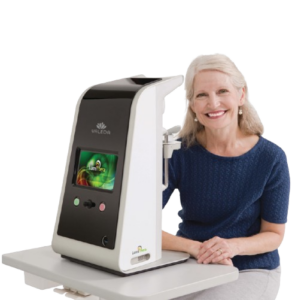
IF YOU OR SOMEONE YOU KNOW HAS DRY AGE-RELATED MACULAR DEGENERATION,
LEARN ABOUT THE VALEDA LIGHT DELIVERY SYSTEM-
NOW AVAILABLE
Contact us today to see if Valeda is right for you
Tel: (859) 263-3900 extension 144
Toll Free: (800) 627-2020 extension 144
Email: Lighttherapy@retinaky.com
About Valeda
Valeda is the first and only FDA authorized treatment device for Dry Age-Related Macular Degeneration (Dry AMD). Valeda treats AMD using Photobiomodulation (PBM), to apply specific wavelengths of light to the eye, stimulating mitochondrial energy activity within the cells of the eyes and improving their ability to perform their roles. Clinical studies have shown that Valeda can improve visual outcomes.
What to Expect?
The Treatment Course
Typically consists of three cycles annually, four months apart. Nine treatment sessions spread over a 3-5-week period typically make up one treatment cycle.
Treatment lasts less than 5 minutes on each eye. The treatment is safe, non-invasive, and generally pain free. There is no down-time required following treatment.
What Happens After?
A follow-up retinal examination with imaging is performed after your last treatment in each cycle.
Does Insurance Cover Valeda?
About Macular Degeneration
AMD is a medical condition which may result in blurred or no vision in the center of the vision. Early on, typically with “dry” AMD, there are often no or minimal symptoms. If AMD advances, it becomes the more aggressive of the two forms: “wet” AMD, which is called “wet” because of blood vessel growth and leakage. If the disease is discovered in its early stages, some treatments can help prevent the vision loss from both dry and wet AMD.
Common risk factors that can contribute to a person’s risk of developing AMD:
- Age – 50+
- Smoking – Smoking doubles the risk of developing AMD.
- Cardiovascular Diseases – high blood pressure, stroke, heart attack, and coronary artery disease all increase the risk of developing and losing vision from AMD
- Family History – If you have a family member who has the disease, you could be at higher risk.
- Nutrients – Diet without enough green leafy vegetables, broccoli, or fish contributes to the progression of AMD.
- Eye Color – Light colored eyes tend to be a greater risk.
- Ethnicity – Caucasians have AMD more than members of any other ethnic group.
- Obesity – AMD is more likely to progress in severely overweight patients.
- Gender – Women are more likely to develop AMD than men.
You can help save your vision by stopping smoking, proper nutrition and weight control.
Early warning symptoms of AMD:
- General haziness or blurriness of vision, especially when reading
- Need for bright illumination when reading
- Blurred or blind spot in the center of vision
- Wavy or crooked appearance of straight lines
- Rapid loss of central vision
- Inability to recognize faces at a distance
- Loss of color vibrancy or ability to distinguish between colors
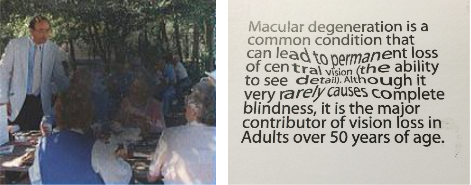
Early diagnosis and treatment are the keys to saving vision. Treatments are rapidly evolving, and many studies are ongoing at our practice and elsewhere. If you are diagnosed with the dry form of AMD, you will be given an Amsler Grid to monitor your progression daily.
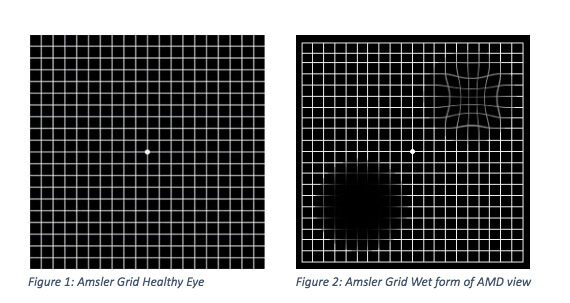
Another option for monitoring your progression from dry to wet AMD is an at home device by Notal Vision, ForeseeHome. Retina Associates was a site in the clinical trial for this device and now prescribes for patients with dry AMD. You take a simple 3 minute daily test to check for any changes in your vision. The response from your test is automatically transmitted to the Notal Vision Data center for tracking. If the device notices a change your physician is alerted so that we can schedule a prompt clinical examination with you.
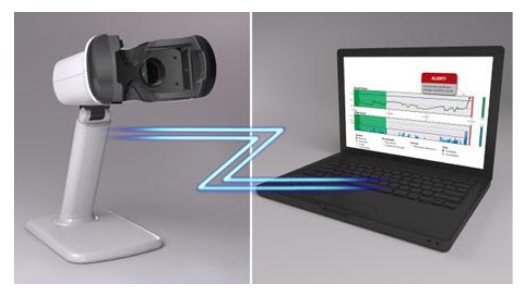
Treatment for AMD
If you have dry AMD, proper diet with a special formula of vitamins and minerals called AREDS II, based on the Age-Related Eye Disease Study II, can help preserve your vision. If you have wet AMD, ocular injections of vision saving medicines can not only preserve your vision, but in half the patients, can reverse vision loss significantly. Your retina specialist at RAK is uniquely trained and qualified to give you these injections and monitor your progress. In very difficult cases, Photodynamic Therapy (PDT), an older treatment, is still beneficial in controlling more aggressive forms of wet AMD.
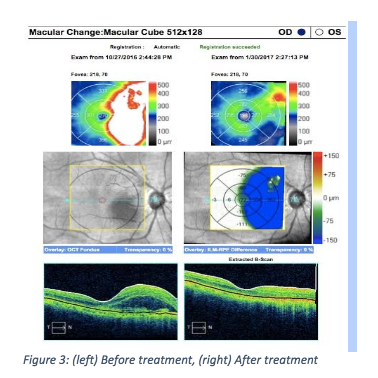
Our physicians are encouraging early detection daily to our patients and their families and are committed to providing state-of-the-art total care for AMD patients with diagnosis, education, prevention, treatment, research, low vision services and support groups.



